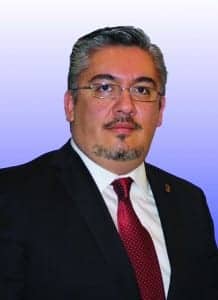IFFPSS President Jose Juan Montes, MD, pushes for member education | Plastic Surgery Practice July 2014
By Denise Mann

Every 4 years, the American Academy of Facial Plastic and Reconstructive Surgery and the IFFPSS co-host the international symposium, where facial plastic surgeons from all over the world exchange ideas and learn from one another.
Here’s what Montes, a facial plastic surgeon in Mexico City, had to say about global rhinopopularity, the demise of the Latin American nose, and the importance of universal standards for training facial plastic surgeons.
1. What is the most popular facial plastic surgery in Mexico City?
Rhinoplasty. This is not only true in my country, but for the rest of the world. Rhinoplasty is the cornerstone of facial plastic surgery. After rhinoplasty, blepharoplasty is the most common. The use of neurotoxins and soft-tissue fillers are also popular in Mexico.
2. How much of your practice is cosmetic?
90%.
3. What type of results are your aesthetic patients seeking?
It’s a paradox. Patients will tell you, “I want to look better, but I don’t want anyone to notice.”
4. Are there any off-the-shelf fillers you use that are not approved by the US Food and Drug Administration?
Yes. Juvéderm Volift is great for nasolabial folds and getting rid of big wrinkles. Juvéderm Volbella is also excellent for lip enhancement.
5. What is the focus of your 2-year IFFPSS presidency?
My goals are to improve patient safety and enhance physician education and training.
6. Other countries seem behind the US when it comes to regulating this industry. Is this changing?
Yes, it has been changing a lot in the past few years. Agencies are more aware, and by aware, I mean that they are more willing to regulate and observe the people who perform cosmetic surgery and the places that these procedures are performed. Europe has been taking huge steps toward establishing universal standards for the training of facial plastic surgeons and patient safety.
7. Speaking of which, tell us about your new patients safety bill.
We had a huge national discussion regarding fillers because a pop singer got fillers in the buttocks in the wrong setting with the wrong doctor and developed complications. We wanted tighter regulation on these procedures. Finally, Congress passed a new bill that protects the patient—the National Health Law 81.
8, Are there any technical challenges in treating Latin American patients?
It is hard to use lasers because if you are too dark, you can get complications. Our skin is also thicker, which can make it harder to shape.
9. Is there a Latin American nose?
There was, but nowadays we are invading the US, so there is no such thing as Latin American nose anymore. There are differences in skin thickness and projection, but not in terns of ethnicity.
10. What was the most significant thing that you learned during the international meeting?
I did a lecture with a colleague from South Korea and learned that we could address the same problem in South Korea and Mexico with different training and still get a very nice end result. Standards of beauty are universal and problems are universal, and what we are learning here surpasses ethnicity.
Denise Mann is the editor of Plastic Surgery Practice. She can be reached at [email protected].
Original citation for this article: Mann D. As the world learns: IFFPSS president Jose Juan Montes, MD, pushes for member education. Plastic Surgery Practice. 2014;(7),34.



